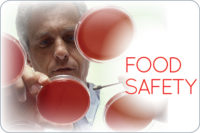Nearly two decades ago — as the government’s ability to track, identify and solve foodborne illness outbreaks became more and more robust — we saw an incredible increase in the number of lawsuits being brought against food companies. As the numbers of foodborne illness cases increased, those of us experienced in defending companies against these claims opined that foodborne illness litigation would soon outpace claims being asserted for tobacco and asbestos exposure. We were right.
Every day, for nearly a decade, foodborne illness lawsuit after foodborne illness lawsuit was filed. The success of a few plaintiffs’ lawyers attracted others. Soon, there were thousands of plaintiffs’ lawyers across the United States claiming to be “expert” food poisoning attorneys. Some were good, but most were novices. And we defense lawyers always had an arsenal of arguments to keep them at bay.
Product ID was always a winner. Because in most cases at least a few days (if not a few weeks) needed to pass before the consumption of a food product would result in the onset of symptoms, we always had the ability to argue that there were countless alternative environmental or food exposures that could account for an alleged illness. As food defense lawyers became more experienced, it became increasingly difficult for plaintiffs’ lawyers to prove their cases.
But a new threat is emerging. Increasingly, more and more consumers are discovering that they are affected by food allergies. These consumers are also becoming incredibly “allergen aware” when it comes to shopping for and consuming foods. Both foodborne pathogens and food allergens cause illness and physical symptoms. The difference, however, is that the reaction time for allergens is only minutes or hours, not days or weeks.
The net result is, if food companies are not doing a good enough job keeping undisclosed allergens out of their products, there is a good chance consumers will notice. Unlike the old days, where the source of an illness in most cases remained a mystery to be determined by a jury, the source of an allergen reaction is in most cases “the last thing the consumer ate.”
And the risk to industry is increasing. Food companies are selling a lot of food products containing undeclared allergens. Since Jan. 1, there have been nearly 250 food product recalls. The majority have been triggered because of undisclosed allergens.
If these statistics are not reversed, the allergen claims will come. More and more consumers will be affected by products containing undisclosed allergens, and more and more claims will be brought. Look around, and take steps to control for allergens in your facilities. Although the asbestos claims may have ceased, allergens are waiting patiently to take their place. NP





Report Abusive Comment